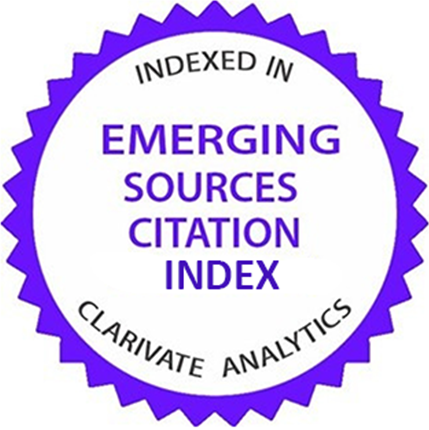Impact of cigarette smoking on the outcomes of ST-elevation myocardial infarction after primary percutaneous coronary intervention in metropolitan Tehran
Abstract
Objective: Although the adverse effects of smoking are well-established, evidence shows a longer survival rate following an acute myocardial infarction (MI) among smokers or the so-called “smoker's paradox”. This study aimed to determine the impact of smoking on the one-year clinical outcomes of ST-elevation myocardial infarction (STEMI) after primary percutaneous coronary intervention (PPCI) in a large registry of the Iranian population. Methods: A total of 3087 patients diagnosed with acute STEMI who underwent PPCI between 2013 and 2018 were enrolled in the study. Patients' smoking status was determined based on self-reported history and categorized into two groups: current smokers and non-smokers. Clinical and angiographic data were collected from the Tehran heart center (THC) registry. The primary outcome was one-year of major adverse cardiac and cerebrovascular events (MACCE). The effect of smoking on MACCE was evaluated using a Cox model. Results: From the study population, 1967 (63.7%) were non-smokers, and 1120 (36.3%) were
current smokers. Non-smokers had higher rates of prior CABG (5.3%) as well as a higher history of co-morbidities, including a history of diabetes mellitus (46.0%), hypertension (52.7%) and hyperlipidemia (55.4%) than smokers (2.3%, 30.4%, 35.7%, and 49.8% respectively). Smokers had a higher reference vessel diameter than non-smokers (P=0.005). The unadjusted hazard ratios HRs) for MACCE within one year were significantly lower in smokers than non-smokers (0.73, 95% CI: [0.58,0.92; P=0.009); however, after adjustment for confounders, the HRs for MACCE in smokers were similar to non-smokers (HR: 1.00 95% CI: [0.73,1.38]). Conclusion: The study found that smoking had no significant impact on the one-year clinical outcomes of STEMI patients after PPCI in the Iranian population. This study is the first of its kind to assess the effect of smoking on STEMI patients in Iran and highlights the need for further research in this area.
2. Vlietstra RE, Kronmal RA, Oberman A, Frye RL, Killip TJJ. Effect of cigarette smoking on survival of patients with angiographically documented coronary artery disease: report from the CASS registry. 1986;255(8):1023-7.
3. Weinblatt E, Shapiro S, Frank CW, Sager RVJAJoPH, Health tN. Prognosis of men after first myocardial infarction: mortality and first recurrence in relation to selected parameters. Am J Public Health Nations Health. 1968; 58(8):1329-47.
4. Himbert D, Klutman M, Steg G, White K, Gulba DC, cardiology GIJIjo. Cigarette smoking and acute coronary syndromes: a multinational observational study. Int J Cardiol. 2005;100(1):109-17.
5. Sharma SP, Dahal K, Rijal J, Fonarow GC. Meta-analysis comparing outcomes of smokers versus nonsmokers with acute coronary syndrome underwent percutaneous coronary intervention. Am J Cardiol. 2018;122(6):973-80.
6. Jaatun HJ, Sutradhar SC, Dickstein K, cardiology OSGJTAjo. Comparison of mortality rates after acute myocardial infarction in smokers versus nonsmokers. Am J Cardiol. 2004;94(5):632-6.
7. Grines CL, Topol EJ, O’Neill WW, George BS, Kereiakes D, Philips HR, et al. Effect of cigarette smoking on outcome after thrombolytic therapy for myocardial infarction. Circulation. 1995;91(2):298-303.
8. Gottlieb S, Boyko V, Zahger D, Balkin J, Hod H, Pelled B, et al. Smoking and prognosis after acute myocardial infarction in the thrombolytic era (Israeli Thrombolytic National Survey). J Am Coll Cardiol. 1996;28(6):1506-13.
9. Aune E, Røislien J, Mathisen M, Thelle DS, Otterstad JE. The "smoker's paradox" in patients with acute coronary syndrome: a systematic review. BMC Medicine. 2011;9(1):97.
10. GBD 2019 Diseases and injuries collaborators. Global burden of 369 diseases and injuries in 204 countries and territories, 1990–2019: a systematic analysis for the global burden of disease study 2019. Lancet. 2020;396(10258): 1204-22.
11. Wu HP, Lin MJ. Central aortic pressure and long-term outcome in hypertensive patients undergoing percutaneous coronary intervention. Scientific reports. 2020;10(1):17420.
12. Zhang Y-J, Iqbal J, Klaveren DV, Campos CM, Holmes DR, Kappetein AP, et al. Smoking is associated with adverse clinical outcomes in patients undergoing revascularization with PCI or CABG: the SYNTAX trial at 5-year follow-up. J Am Coll Cardiol. 2015;65(11):1107-15.
13. Grines CL, Topol EJ, O'Neill WW, George BS, Kereiakes D, Phillips HR, et al. Effect of cigarette smoking on outcome after thrombolytic therapy for myocardial infarction. Circulation. 1995;91(2): 298-303.
14. Yadav M, Mintz GS, Généreux P, Liu M, McAndrew T, Redfors B, et al. The smoker’s paradox revisited: a patient-level pooled analysis of 18 randomized controlled trials. JACC Cardiovasc Interv. 2019;12(19):1941-50.
15. Mehran R, Lansky AJ, Witzenbichler B, Guagliumi G, Peruga JZ, Brodie BR, et al. Bivalirudin in patients undergoing primary angioplasty for acute myocardial infarction (HORIZONS-AMI): 1-year results of a randomised controlled trial. Lancet. 2009;374(9696):1149-59.
16. Kedhi E, Joesoef KS, McFadden E, Wassing J, Mieghem VC, Goedhart D, et al. Second-generation everolimus-eluting and paclitaxel-eluting stents in real-life practice (COMPARE): a randomised trial. Lancet. 2010375(9710):201-9.
17. Birgelen VC, Basalus MWZ, Tandjung K, Houwelingen KGV, Stoel MG, Louwerenburg JHW, et al. A randomized controlled trial in second-generation zotarolimus-eluting resolute stents versus everolimus-eluting Xience V stents in real-world patients: the TWENTE trial. J Am Coll Cardiol. 2012;59(15):1350-61.
18. Smits PC, Hofma S, Togni M, Vázquez N, Valdés M, Voudris V, et al. Abluminal biodegradable polymer biolimus-eluting stent versus durable polymer everolimus-eluting stent (COMPARE II): a randomised, controlled, non-inferiority trial. Lancet. 2013;381(9867):651-60.
19. Zocca P, Kok MM, Tandjung K, Danse PW, Jessurun GA, Hautvast RW, et al. 5-year outcome following randomized treatment of all-comers with zotarolimus-eluting resolute integrity and everolimus-eluting PROMUS element coronary stents: final report of the DUTCH PEERS (TWENTE II) trial. J Am Coll Cardiol IntvJACC Cardiovasc Interv. 2018;11(5):462-9.
| Files | ||
| Issue | Vol 8 No 3 (2024): Summer (July) | |
| Section | Original article | |
| DOI | 10.18502/fem.v8i3.16328 | |
| Keywords | ||
| Myocardial Infarction Outcome Primary Percutaneous Coronary Intervention Smoking ST Elevation | ||
| Rights and permissions | |

|
This work is licensed under a Creative Commons Attribution-NonCommercial 4.0 International License. |










